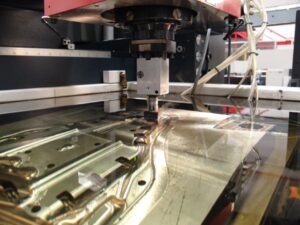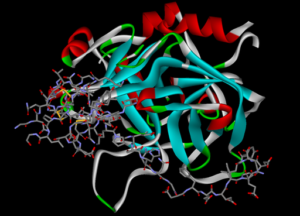 EDM or electrical discharge (spark) machining is the most advanced of metalworking technologies. EDM is worldwide used because of its high accuracy and machining applications where traditional metal removal is highly difficult or even impossible.
EDM or electrical discharge (spark) machining is the most advanced of metalworking technologies. EDM is worldwide used because of its high accuracy and machining applications where traditional metal removal is highly difficult or even impossible.
The principle of EDM operation includes the spark that moves from the wire electrode to the work item approximately at the same speed as the electrical signals transmitting through the wires of the monitoring system. Nevertheless, the distance between this work item and the wire electrode is shorter than the space interval between the spark and the control, that is why there are some difficulties in monitoring.
Thus, spark monitoring is very important and needs some technical improvements. Fiber optics is the best solution for the challenge that provides a high level of process control, increases the life of the wire, and eliminates the possibility of wire damage. Moreover, the use of a fiber optic spark monitoring system improves the problem of slow electrical signals and thereby, allows making timely all required adjustments and maintaining permanent sparks.
The main aim of fiber-optic cable use is the reduction of wire wear to save costs for the user. For example, previous machines had stronger sparks and low frequency that provoked high wire pressure. Novel fiber monitoring systems have a higher number of sparks per second with less intensity.
It should be mentioned that fiber-optic cables are not limited by the electricity speed comparing to electrical wires because fiber cables transmit data through light pulses. Moreover, they are almost one hundred times faster than electrons. This improvement allows not only reducing wire wear but also keeping spark output and decreasing the necessary voltage.
Also, fiber optic cables leave behind electrical wires because of the following reasons:
- safety due to nonconduction of fiber optics;
- lightness despite the required power and distance;
- higher data bandwidth at longer distances;
- faster transmission speed;
- the thinness of the cable;
- the durability of fiber cables;
- better reliability;
- lower total costs.
Optromix is a manufacturer of innovative fiber optic products for the global market. The company provides the most technologically advanced fiber optic solutions for the clients. Optromix produces a wide range of fiber optic devices, including cutting-edge customized fiber optic Bragg grating product line and fiber Bragg grating sensor systems. Moreover, Optromix is a top choice among the manufacturers of fiber Bragg grating monitoring systems. If you have any questions, please contact us at info@optromix.com


 Thrombin plays a very important role in normal and pathological blood coagulation because its high level is an indication of tumor cell presence. Also, the level of thrombin is growing while atherosclerosis, thromboembolic disease, cancer, and inflammatory disease. Thus, its clinical importance provokes the development of devices for fast and precise thrombin detection and most of them are based on aptamers.
Thrombin plays a very important role in normal and pathological blood coagulation because its high level is an indication of tumor cell presence. Also, the level of thrombin is growing while atherosclerosis, thromboembolic disease, cancer, and inflammatory disease. Thus, its clinical importance provokes the development of devices for fast and precise thrombin detection and most of them are based on aptamers. Today environmental change provokes the appearance of new diseases and, finally, human health care requirements continue increasing for several decades. Moreover, it is necessary to have new advanced tools for the disease diagnosis at early stages, for monitoring and treatment of patients. Then unconventional biomedical instrumentation and sensors, including
Today environmental change provokes the appearance of new diseases and, finally, human health care requirements continue increasing for several decades. Moreover, it is necessary to have new advanced tools for the disease diagnosis at early stages, for monitoring and treatment of patients. Then unconventional biomedical instrumentation and sensors, including 




